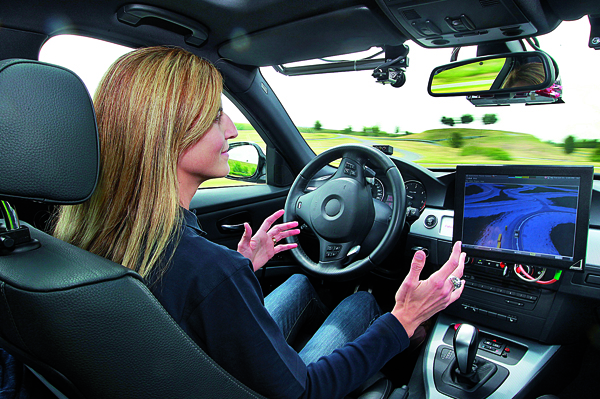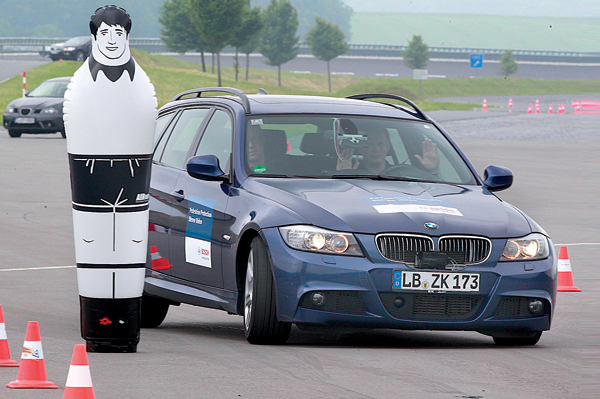There's something not quite right about the grin on the face of the man from Bosch in the driver’s seat of this blue BMW 3-series estate. It’s a bit too gleeful for somebody who is hurtling a car towards an obstacle at serious double-digit speeds. As my grip on the grab handle tightens, I can’t help but wonder if he actually enjoys scaring the bejeezus out of innocent passengers. About a metre remaining, 1000-watt grin still beaming, he calmly exclaims, “I let go now,” and takes his hands off the wheel. If I knew any German curse words, they’d have been uttered loudly by now. But, sure enough, the steering invisibly yanks itself left and then right, and the car automatically ABS-brakes itself to a clean, safe halt; no driver input whatsoever. It’s still scary, even though you’re expecting it.
If the only place you’ve seen the Bosch name is on your refrigerator or washing machine, that’s understandable, because when it comes to their automotive technology, it’s usually hidden away under your car’s skin. From fuel injectors to the brain that controls the safety systems, and every techie acronym in between – Bosch has a hand in it all.
But today, for the 2013 Bosch Automotive Press Briefing at the Boxberg proving ground in Germany, we’re not looking at what’s already in your car, but rather what could be in the near future. A lot of the industry’s now-ubiquitous technology originated at Bosch (ABS, for one), so there’s a good chance we’ll see the tech on display today in our cars in the coming years. Some of it is simple and clever (like wipers with water jets in the blades themselves) and some of it seems like science fiction, but all of it is geared at making motoring safer, easier and more efficient. It’s also worth noting that we’ve seen a lot of these concepts previously, but many of them have been greatly refined and updated this time around.
Take my apparent tryst with danger in the BMW earlier – collision detection has been around for a few years, but today’s system is quicker and more accurate than ever before. The sensors have evolved out of their large, chunky origins too, and Bosch showed off different cars equipped with tiny mono and stereo cameras as well as more conventional radar sensors. There’s simply too much to see here, so we’ll focus on a few interesting bits of tech that caught our eye



